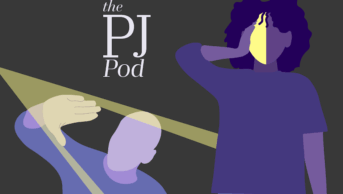
Shutterstock.com
I joined the NHS during one of the most challenging times — March 2020, during the COVID-19 pandemic. Since then, it has been a rollercoaster of unique experiences and opportunities. However, there is one experience that stands out: the development of my specialist role in epilepsy at Eastbourne District General Hospital.
When I started my independent prescribing course, I initially chose to focus on migraine, mainly because my designated prescribing practitioner was a GP and did not feel confident around clinically supporting the prescribing of other neurology specialties. But in truth, I already had a passion — epilepsy. The course gave me the perfect opportunity to get to know the local neurology team and shadow some of their clinics. Through these connections, and while covering the acute medical unit (AMU) ward at the hospital, it felt natural to begin discussing antiseizure medication treatments for patients admitted with seizures.
However, even as an independent prescriber, I felt limited in the interventions I could make on the ward. So, I approached the lead neurology consultant to explore opportunities and, as it turned out, the opportunity was already there waiting for me: one of the specialist epilepsy nurses was off sick for a few months and I was asked if I could cover the outpatient epilepsy clinic.
I remain incredibly grateful for the strategic and forward-thinking support of my line manager, East Sussex Healthcare NHS Trust’s deputy chief pharmacist, who believed in me and in the future of my role. He also helped challenge the misconception held by some senior pharmacists, who believed that prescribing in epilepsy was “too dangerous for a pharmacist”. Within a couple of months, I was leading a new epilepsy outpatient clinic, and one of the most meaningful adventures of my life had begun.
I’ve lost count of how many times patients have expressed their frustration at not being included in decision-making
Although my knowledge was quickly recognised by both patients and medical professionals, I do not believe that was the quality patients valued most. What they truly needed — especially with a life-changing condition such as epilepsy — was empathy and compassion. They needed a safe space to share fears and frustrations, and permission to break down without judgement.
And what about being placed at the centre of the consultation? I’ve lost count of how many times patients have expressed their frustration at not being included in decision-making — especially in the inpatient setting. I could feel their frustration when they came to clinic after a hospital admission, powerless in the face of decisions made under pressure by doctors who had not had time to fully explain a medication change.
Through participating in AMU ward rounds, I felt empowered and privileged to be in a position where I could truly drive change for those patients. It was then that other aspects of my role emerged: making decisions during the AMU ward round (avoiding delays that an internal referral would have caused) and responding to inpatient referrals related to pharmacological management of epilepsy on behalf of the neurology team.
What did this mean for patients? First, they had an advocate — someone who could make their voice heard and actively involve them in decision-making. I could offer to discuss the different treatment options with patients after the ward round and only then implement changes that had been agreed upon.
This also brought significant advantages for the AMU team. They no longer had to wait for a neurology consultant to review the patient — I was doing that, and simultaneously liaising with the neurology consultant on call to communicate my decisions, freeing them up to attend to more complex cases elsewhere. This streamlined process also reduced delays in discharging patients.
Too often, teaching remains siloed: pharmacists teach pharmacists, doctors teach doctors, nurses teach nurses
An added benefit was that I already knew many of these patients. I could recommend treatment options based on their history and past responses, saving AMU consultants and foundation doctors the time it would take to go through years of clinical letters, or waiting powerless for a neurologist to review the patient.
A final — and very important — aspect of my role has been teaching. Too often, teaching remains siloed: pharmacists teach pharmacists, doctors teach doctors, nurses teach nurses. But one of the most rewarding parts of my job has been teaching doctors. How can we truly improve practice unless we discuss real cases and evolve together?
My experience of teaching doctors began with a sad case of suboptimal management of status epilepticus. I reported the case, and instead of defensiveness, people across the trust wanted to make real changes — with me. Together, we introduced meaningful improvements, reinforced by pharmacist-led teaching.
And receiving emails from stroke consultants or emergency department consultants saying: “Please come and teach our juniors again; they haven’t stopped talking about it” — that’s absolutely priceless.


